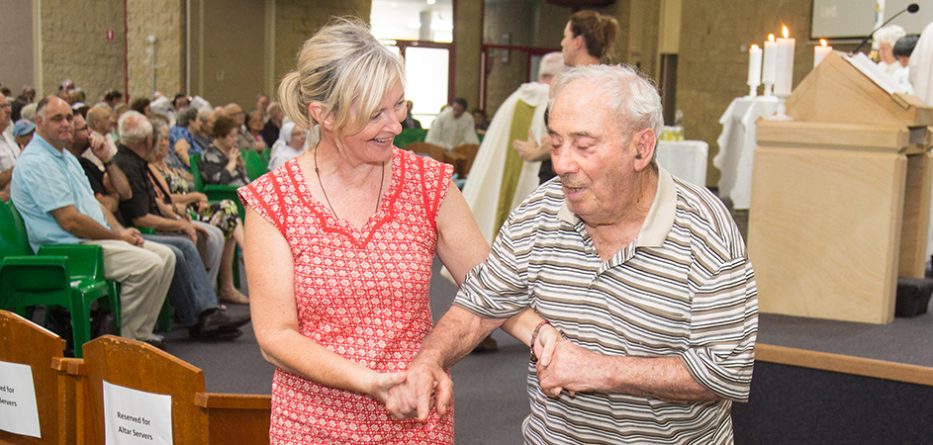If the stimulus-heavy federal budget was not the right moment to finally fill the gaping funding hole in Australian aged care, one probably has to conclude the moment will never come. So it is time for the Morrison government to start getting creative.
The aged care royal commission has laid bare the hard choice facing the government: find the billions required each year to bring the sector up to scratch, or accept the examples of poor quality care that have shocked us recently will become more common.
According to Deloitte’s modelling, if we just want to finance the reforms the royal commission is recommending, it will require a 1 per cent income tax hike. For the average wage earner, that’s about $750 a year.
Jacking up household taxes is unlikely to appeal to the government; fortunately, other options are available. As the depth of the economic crisis reveals itself, the Treasurer may soon have unprecedented licence to explore them.
An impartial observer examining our aged care funding problem would not take long to point a finger at a potential source of billions that’s currently quarantined: housing wealth. When we means-test seniors for personal and nursing care, we count only the first $171,000 of the value of their home. So a senior living in a $200,000 flat is tested at the same rate as one with a $3 million house.
The reason for this exemption is simple: no politician wants to be seen as “coming after grandma’s home”.
Fair enough. In a perfect world we could leave housing wealth untouched, as people obviously like to pass on to their children. But when the alternative is to slug every other Australian with higher income tax, a more balanced approach may be necessary.
A meagre 20 per cent of Australia’s aged care spending is met through the contributions of users, and most of that is to pay for everyday living expenses. The other 80 per cent is picked up by the taxpayer.
There are any number of ways we can make it simple for seniors to draw down against the value of their homes. The Pension Loan Scheme, for example, could be made more attractive, with better rates and ease of access.
You can’t, however, rely on rivers of property gold to deliver the necessary funds forever. Many seniors today – and many more to come – will not enter retirement with significant housing wealth accumulated.
Public funding will need to keep playing a significant role, but there are other options for the government to consider.
Bundling a range of thorny issues private health insurance, superannuation, and aged care – may create the opportunity for historic reform.
Currently our system manoeuvres young healthy people into paying for health insurance for which many will get little in return until their 60s. Our private health insurers rely on these young “net contributors” to help subsidise the much higher costs associated with senior members.
But with flat wage growth and a recession now biting hard, young Australians are increasingly reluctant to play their necessary role in the system. Some simply can’t afford it. Others might suspect they are paying for a favour that won’t be repaid.
But we need young, productive people to keep paying for the costs that will be necessary down the track. The solution may be to shift away from the indirect intergenerational financing mechanism of private health insurance and towards a more direct actuarial funding tool.
Health savings accounts might be facilitated as an add-on to superannuation and an alternative to private health insurance, offering consumers a better way to meet their health expenses later in life. Through these HSAs, a portion of income each year could be deposited to an accumulating individual or family account, to pay for care as it is needed – most likely much later in life.
HSAs would reflect the life-cycle pattern of health expenditure, accumulating in younger years when most people enjoy good health, and then being drawn down in old age as income falls and healthcare needs mount.
This would free up public funding to focus where it is most necessary: on the poor and disadvantaged. It would provide inherent incentives for people to adopt more healthy lifestyles, as individuals would gain financially from self-investment in prevention. And HSAs would force healthcare providers to recalibrate to meet the needs of patients, rather than of government or insurance companies.
Such a consumer-driven system with operational price signals would enable providers to compete for market share by improving quality and lowering costs.
Certainly the overseas experience with HSAs is encouraging. Singapore is the nation with the most extensive experience, having introduced its medical savings account system in 1984. Since then the city state has enjoyed excellent health outcomes including minimal surgery waiting times, achieved with relatively low expenditure on health – about 3 per cent of GDP, compared with a global average of 8 per cent.
If Australians were prepared to make a leap to such an HSA system, it would be relatively easy to amend the model so that it might contribute also to aged care.
Saving during your working years for your retirement, your healthcare and your aged care makes sense. Of course, this would represent the most ambitious healthcare reform agenda since Medicare was introduced by the Hawke government. But a new age of big ideas is approaching fast.
Pat Garcia is chief executive of Catholic Health Australia.
With thanks to Catholic Health Australia.








